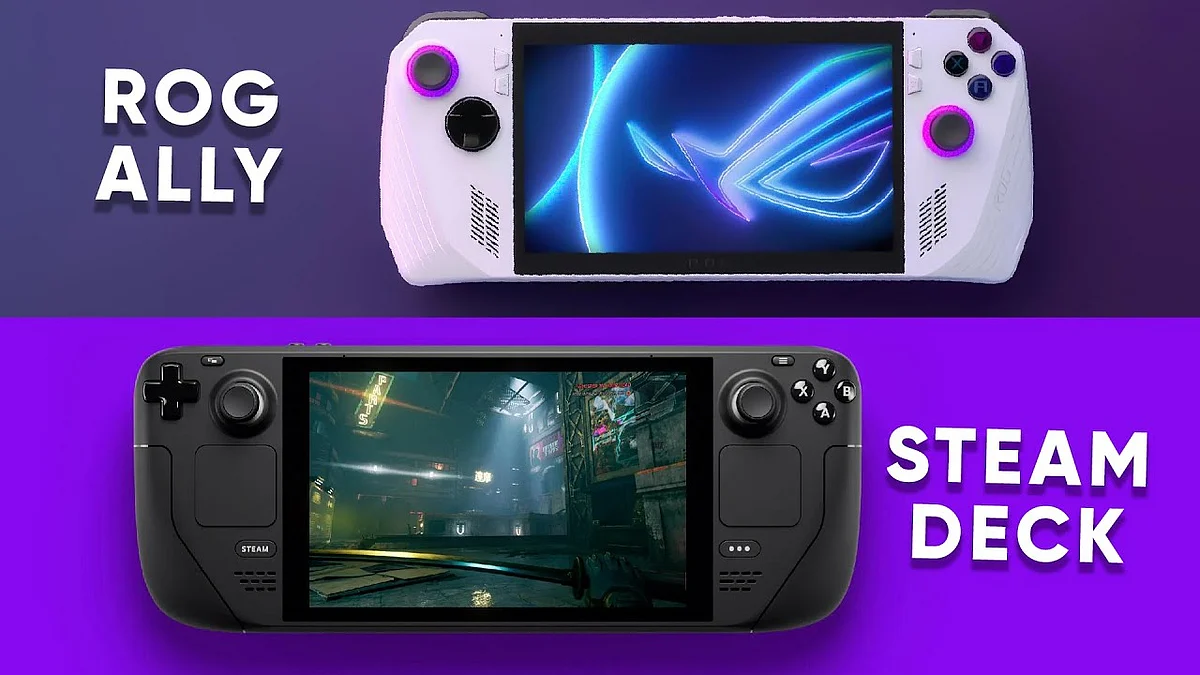
Cover-Credits:
Image via TechInfluencer YouTube
When it comes to handheld gaming PCs, two major contenders have emerged in the market: the Steam Deck by Valve and the Asus ROG Ally. Both offer unique features and competitive pricing, making the decision of which one to choose a tough call. In this article, we'll compare the two consoles in terms of pricing, hardware performance, game library, software, display, and design to help you make an informed decision on which handheld gaming PC is right for you.
A Detailed Comparision of The Steam Deck and Asus ROG Ally
Pricing and Availability
The Steam Deck offers three variants, starting at $399 USD ( approx. ₹49,000 INR) for the base model with 64GB of eMMC storage, while the higher-end versions with 256GB and 512GB SSDs cost $529 USD and $649 USD, respectively. On the other hand, the Asus ROG Ally debuted at $700 (₹69,999 INR) for the model featuring the AMD Ryzen Z1 Extreme chip and 512GB SSD. A more affordable model with a standard Ryzen Z1 processor and 256GB storage will be released later at $600.
Performance
The Asus ROG Ally takes the lead when it comes to performance. With AMD Ryzen Z1 and Z1 Extreme chips based on the Zen 4 architecture, it offers 6 to 8 cores and 12 to 16 threads, providing significantly better processing power compared to the Steam Deck's older Zen 2 architecture, which features 4 cores and 8 threads. The ROG Ally also boasts RDNA 3 graphics architecture, while the Steam Deck offers RDNA 2. Consequently, the ROG Ally excels in running demanding games and offers twice the performance at 30W power, albeit with a potential hit on battery life.
Game Library and Software
The Steam Deck grants access to a vast collection of games on Steam, the largest PC gaming digital library. However, it runs on SteamOS, a custom Linux-based OS that might limit compatibility with certain games and applications. In contrast, the Asus ROG Ally runs on Windows 11, offering broader game compatibility, access to other PC gaming platforms like Epic Games Store and Xbox, and games that rely on anti-cheat software, making it the winner in terms of game availability.
Display
Both devices feature a 7-inch IPS touch display, but the ROG Ally gains the upper hand with a 1080p resolution and a 120Hz refresh rate, delivering smoother visuals and higher brightness of 500 nits compared to the Steam Deck's 1200x800 resolution, 60Hz refresh rate, and 400 nits brightness. However, the ROG Ally's superior display comes at the cost of potentially shorter battery life.
Design and Controls
The ROG Ally's design is more compact and lightweight than the Steam Deck's, making it more portable and comfortable to hold. Both devices share similar controls, including analog sticks, directional buttons, ABXY button array, shoulder triggers, and Xbox-style view and menu buttons. The Steam Deck stands out with additional touchpads on each side, offering precise aiming and control options, while the ROG Ally features customizable rear buttons.
Considering all factors, the Steam Deck and the Asus ROG Ally cater to different preferences. The Steam Deck provides a seamless gaming experience with its purpose-built SteamOS, Deck Verified program, and competitive pricing, making it a fantastic choice for handheld gaming enthusiasts. On the other hand, the ROG Ally appeals to gamers seeking more power and game compatibility with its Windows 11 OS, better performance, and a superior display. Ultimately, the choice boils down to individual preferences and priorities, making both devices strong contenders in the handheld console market.
